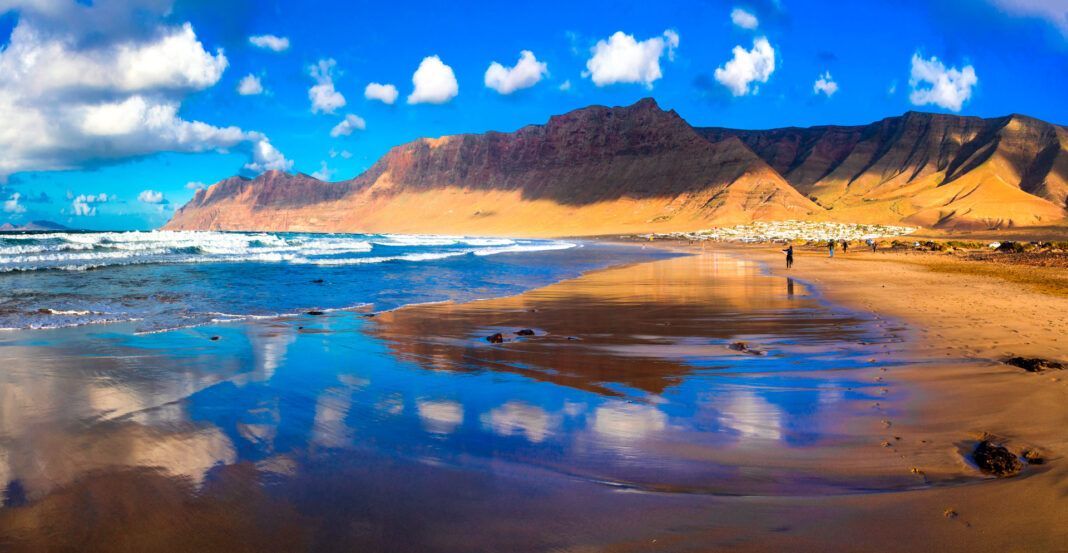Famara is a beautiful, wild beach that lies at the foot of the cliffs. Although the waves roar out at sea, they quieten by the time they lap the shoreline. Low tide is perfect for long quiet strolls, splashing about or riding the waves. The glistening sand reflects the views back up at you for twice the pleasure.
There are many aspects to Famara’s beauty: it’s one of the most spectacular natural spaces in Lanzarote because of its impressive wild beach, vast cliff face, natural wells, water galleries, and archaeological sites. Visitors to the small village of La Caleta get a sense of authentic island life when they see the sandy streets, the white houses and a lifestyle that revolves around water sports like surfing, windsurfing and kitesurfing.
There are also restaurants and terrace bars where you can enjoy succulent fresh fish or limpets with mojo sauce. And best of all, despite an increasing influx of tourists, it maintains its quiet, cosmopolitan and somewhat hippy lifestyle.
Next to La Caleta is Playa San Juan, the venue for the World Surfing Championships – yes! Famara boasts amazing waves. At the other end of the beach, there’s a group of luxury bungalows called Los Noruegos, built in the early seventies. As a village, though, Famara dates further back, when several families from Teguise and Soo settled there, attracted by the good fishing. Towards the end of the 1930s wealthy families such as the Manrique and Matallana, began to spend their summers there. However, it didn’t have electricity or running water until the seventies, so locals had to rely on water from a well at the entrance to the village.
Famara’s other great charm is its imposing cliff (Risco) of the same name, which looms more than four hundred metres high and affords incredible views. Up at the top, it’s a popular spot for hang-gliding and paragliding enthusiasts. This cliff is millions of years old and was the second part of the island to emerge from the water. It was formed by different volcanic lava flows that are 10.2 million years old at its base and 3.6 million years old at its summit. It also houses several natural springs that provide drinking water. In the 1950s, this discovery led to the creation of five galleries that were dug into the cliff to collect more water. Until the arrival of salt water treatment plants in the mid-1960s, it was the only supply of water on the whole of Lanzarote.



